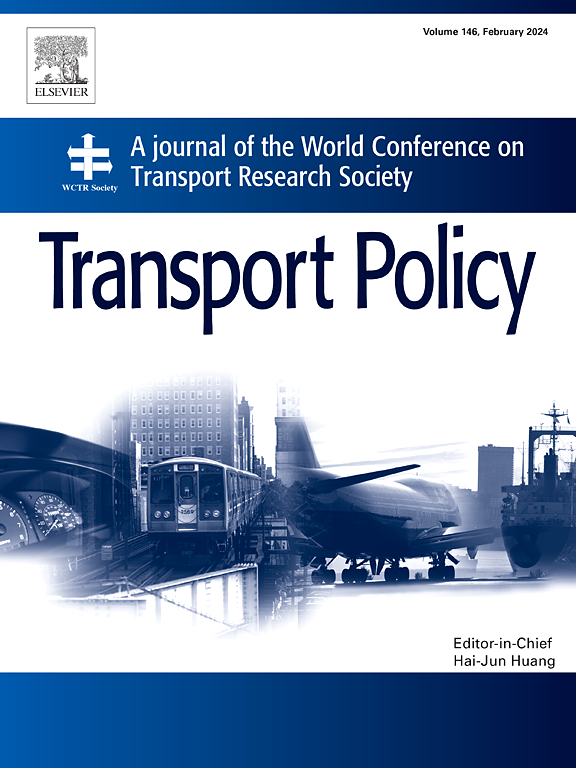高铁连接对中国周边城市经济发展的影响:创新能力的视角
IF 6.3
2区 工程技术
Q1 ECONOMICS
引用次数: 0
摘要
高速铁路对周边城市发展的影响是一个双向的过程,但对这一主题的研究还很有限,结果也参差不齐。本文建立了考虑劳动力流动成本和区域生产率异质性的空间一般均衡模型,分析了高铁与周边城市经济发展的关系。本文利用2003 - 2019年中国高铁建设数据集,从创新能力的角度考察了高铁对周边城市的影响。采用差异中的差异模型探讨高铁对这些城市的异质性效应。研究结果表明,平均而言,高铁建设对周边城市的经济发展没有显著影响。然而,考虑到创新能力的差异,创新能力较强的周边城市更能发挥高铁连接的积极作用。通过对城市对层面数据的分析,我们发现创新能力较高的外围城市劳动力外流较少。本文的研究结果对高铁连接对周边城市经济发展影响的现有文献有所贡献,并为地方政府制定明智的高铁建设决策和提高地方创新能力提供了参考。本文章由计算机程序翻译,如有差异,请以英文原文为准。
The effect of high-speed railway connections on economic development in China's peripheral cities: A perspective of innovation capacity
The impact of high-speed railway (HSR) on the development of peripheral cities is a two-way process, yet research on this topic remains limited and yields mixed results. This paper develops a spatial general equilibrium model that incorporates labor mobility costs and regional productivity heterogeneity to analyze the relationship between HSR and the economic development of peripheral cities. By utilizing a dataset on China's HSR construction from 2003 to 2019, this study investigates the impact of HSR on peripheral cities through the perspective of innovation capacity. A difference-in-differences model is employed to explore the heterogeneous effects of HSR on these cities. The findings reveal that, on average, HSR construction does not significantly affect the economic development of peripheral cities. However, when accounting for differences in innovation capacity, peripheral cities with stronger innovation capacity are better positioned to leverage the positive effects of HSR connections. Analyzing the city-pair level data, we find that peripheral cities with higher innovation capacity experience fewer labor outflows. Our findings contribute to the existing literature on the impact of HSR connections on the economic development of peripheral cities and offer insights for local governments in making informed decisions about HSR construction and the enhancement of local innovation capacity.
求助全文
通过发布文献求助,成功后即可免费获取论文全文。
去求助
来源期刊

Transport Policy
Multiple-
CiteScore
12.10
自引率
10.30%
发文量
282
期刊介绍:
Transport Policy is an international journal aimed at bridging the gap between theory and practice in transport. Its subject areas reflect the concerns of policymakers in government, industry, voluntary organisations and the public at large, providing independent, original and rigorous analysis to understand how policy decisions have been taken, monitor their effects, and suggest how they may be improved. The journal treats the transport sector comprehensively, and in the context of other sectors including energy, housing, industry and planning. All modes are covered: land, sea and air; road and rail; public and private; motorised and non-motorised; passenger and freight.
 求助内容:
求助内容: 应助结果提醒方式:
应助结果提醒方式:


